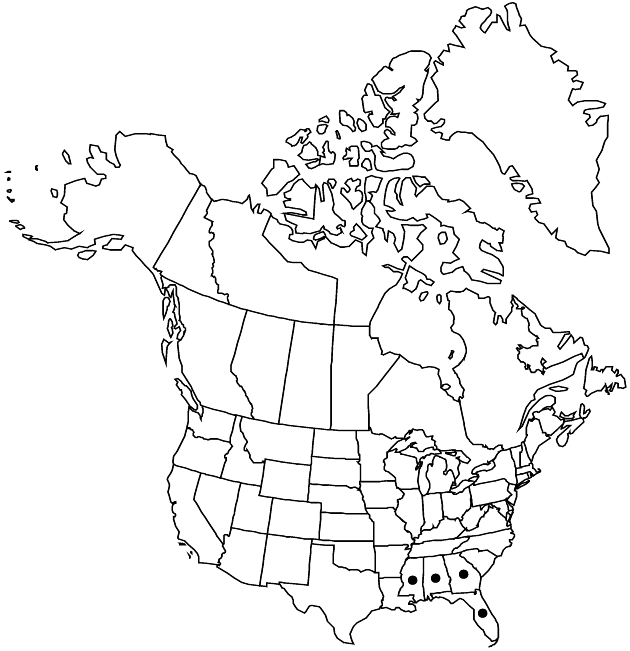Eupatorium petaloideum
Bull. Torrey Bot. Club 24: 492. 1897.
Perennials, 30–70 cm. Stems (from short, stout rhizomes) single, branched distally, puberulent. Leaves usually opposite (distal sometimes alternate); sessile; blades pinnately nerved, elliptic to ovate, 20–80 × 10–30 mm, bases cuneate, margins serrate to crenate-serrate, apices rounded to acute, faces sparsely villous (abaxial), glabrate (adaxial), little, if at all, gland-dotted. Heads in corymbiform arrays. Phyllaries 9–15 in 2–4 series, linear, 4–10 × 0.6–1 mm, apices (white) acuminate to attenuate, strongly mucronate, abaxial faces glabrous, not gland-dotted. Florets (4–)5; corollas 3–3.5 mm. Cypselae 2.5–3 mm; pappi of 40–50 bristles 3.5–4 mm. 2n = 20.
Phenology: Flowering Jul–Sep.
Habitat: Upland scrub oak and longleaf pinewoods, fine textured, loamy soils
Elevation: 20–100+ m
Distribution

Ala., Fla., Ga., Miss.
Discussion
Eupatorium petaloideum is commonly combined with E. album; it has recently been separated as a distinct variety. V. I. Sullivan (1972) found the two taxa to be distinct chemically and to occupy different habitats. In both, the involucral bracts are white and long-acuminate or mucronate; those of E. petaloideum are almost entirely devoid of any pubescence including glands and those of E. album have both simple and glandular hairs.
Selected References
None.